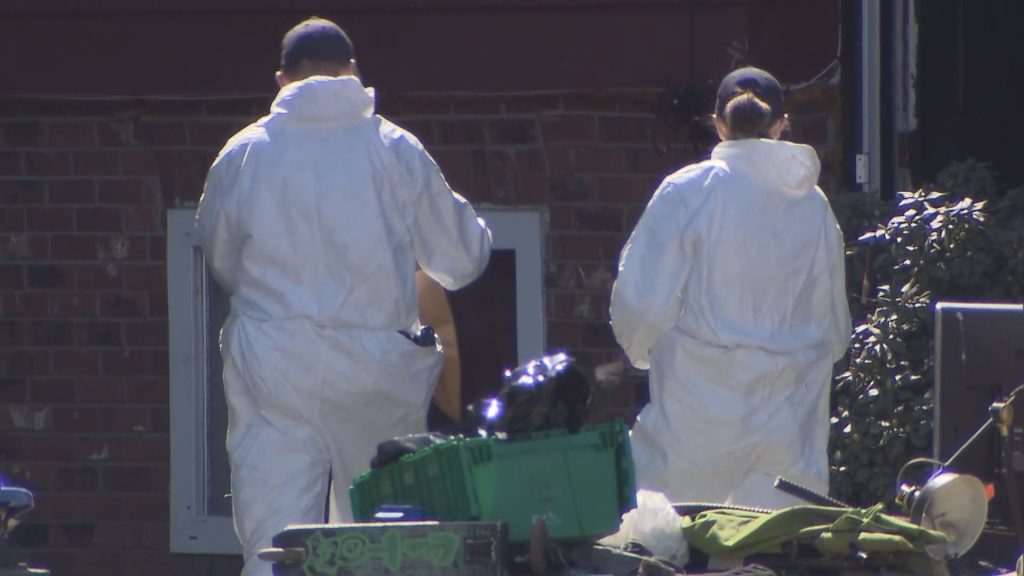Pittsburgh’s Golden Triangle: A vibrant retail destination?
Posted March 15, 2017 10:35 am.
Last Updated March 15, 2017 11:20 am.
This article is more than 5 years old.
PITTSBURGH, Pa. – In a Golden Triangle teeming with restaurants, the Pittsburgh Downtown Partnership has set its sights on adding more retail — unique, one-of-a-kind shops it hopes will lure shoppers from regional malls.
Jeremy Waldrup, the partnership’s president and CEO, sees a future in the city’s core for more shops like Moop, a handbag store on First Avenue, and Steel City, an apparel store that started as a pop-up and now has signed a lease for a location on Smithfield Street.
“When you look at the future of retail, we think that sort of only-in-Pittsburgh type of experience is a real opportunity for Downtown,” he said. “Those types of retail are going to allow us to differentiate ourselves from other neighbourhood shopping destinations or malls.”
While Downtown has added 60 new dining destinations in the last 10 years, traditional retail has not kept pace. In fact, the Golden Triangle has sustained major retail losses with the 2012 closing of the upscale Saks Fifth Avenue store and the 2015 closing of the Macy’s department store.
It has been a struggle to find replacements, as more consumers turn to the internet to shop and as Downtown seeks to build its residential stock. Parking, free in the suburbs but not Downtown, also has been a perennial issue.
In its push to create more retail, the Pittsburgh Downtown Partnership hopes to work with the local real estate community “to ensure that Downtown is just as vibrant a retail destination as it has become a restaurant destination.”
Toward that end, it has developed a four-page brochure filled with facts and figures that could be of use in luring prospective retailers. It includes numbers on residents (31,000), employees (131,000), college students (22,000), annual visitors (11 million), and hotel rooms (6,000).
The brochure is a first for the partnership, as it tries to increase the attention devoted to retail and bring more stores and services to Downtown. The piece is being distributed to real estate brokers and retailers alike for their use and feedback. Depending on the responses, the partnership may tweak the brochure for its State of Downtown event in April.
Among the potential retail uses mentioned are women’s fashion, sporting goods, cosmetics, clothing and accessories, furniture, home accessories, shoes, hardware and groceries. The partnership estimates that there is 200,000 square feet of retail space available or in the pipeline Downtown.
A full-service grocery topped the list of desired amenities coveted by residents and pedestrians in a survey conducted by the partnership last year. Those surveyed also would like to see a discount/?mass retail chain land Downtown, with the top preference being Target.
Certainly, the partnership isn’t closing the door to larger stores or chains, Mr. Waldrup said.
“We’re thinking large and small, local and chain,” he said. “But we do think there are specific opportunities for those unique-to-Pittsburgh kind of (shops).”
After nearly a decade selling its handmade canvas and waxed-canvas bags online, Moop opened its first storefront in the fall on First Avenue. (Nate Guidry/Post-Gazette)
Herky Pollock, CBRE executive vice-president and one of the region’s top retail brokers, said balance is the key.
“Certainly there’s a place for eclectic local retail Downtown,” he said. “However, any cohesive strategic plan should include an attempt to garner strong regional and national chains to give retail stability to the core.”
Among those most involved in creating more retail Downtown has been the Pittsburgh History and Landmarks Foundation.
The foundation is working with Chas Schaldenbrand, owner of the Heinz Healey’s men’s clothing store on Fifth Avenue, to open a women’s clothing store in the former J.R. Weldin Co. location on Wood Street. It also is leasing space to Katie’s Kandy and a convenience store in two redeveloped buildings on the east side of Wood.
The foundation brought Heinz Healey’s to Downtown from Station Square to occupy a prominent spot in its Market at Fifth development near Market Square.
It also redeveloped a second building in Market Square for the Market Street Grocery, a venture that has been successful enough that Arthur Ziegler, the foundation’s president, said there is talk about perhaps expanding it to the second floor.
While the foundation’s work has been mainly with local merchants, Mr. Ziegler also sees a need to mix in national ones. That formula, he said, proved successful when the foundation first opened the Freight House shops in Station Square in 1979.
“We found that a mixture of national retail and local retail formed a unique attraction and our retail shops did very well,” he said.
Among the potential retail spots that have yet to be developed Downtown are the former Macy’s store, where Philadelphia-based Core Realty has dedicated about 130,000 square feet for retail to supplement offices, a hotel and apartments.
It has been talking to a Florida-based entertainment company about building a 12-screen movie theatre, a bowling alley, an amusement arcade and restaurants at the site.
McKnight Realty Partners also has been talking to potential retailers about occupying the 19,161-square-foot former Office Depot space in the old Gimbels building on Smithfield Street. Izzy Rudolph, a McKnight principal, said there’s been solid interest in the space.
“We’re evaluating our options,” he said.
At the former Saks department store site on Smithfield being redeveloped into parking, hotel and apartment space, Mr. Pollock has signed Fogo de Chao, a Brazilian steakhouse, to occupy about a third of the 30,000 square feet of retail space. He said he is talking to both retailers and restaurants about the other space.
Highwoods Properties, meanwhile, still is considering a grocery for the former food court space in Two PPG Place, part of the PPG Place complex in and around Market Square.
___
Online:
___
Information from: Pittsburgh Post-Gazette, http://www.post-gazette.com










